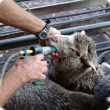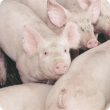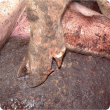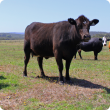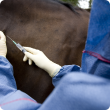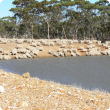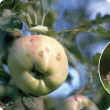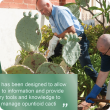Services
Search in Services
Filter services by topic
- (-) Remove Biosecurity & quarantine filter Biosecurity & quarantine
- Biosecurity (128) Apply Biosecurity filter
- Pests, weeds & diseases (115) Apply Pests, weeds & diseases filter
- Diseases (99) Apply Diseases filter
- Livestock biosecurity (95) Apply Livestock biosecurity filter
- Livestock health & diseases (85) Apply Livestock health & diseases filter
- Livestock & animals (85) Apply Livestock & animals filter
- Livestock disease surveillance (81) Apply Livestock disease surveillance filter
- Livestock species (61) Apply Livestock species filter
- Livestock management (31) Apply Livestock management filter
- Sheep (26) Apply Sheep filter
- Emergency animal disease preparedness (26) Apply Emergency animal disease preparedness filter
- Crops (23) Apply Crops filter
- Quarantine (22) Apply Quarantine filter
- Importing to Western Australia (20) Apply Importing to Western Australia filter
- Beef cattle (20) Apply Beef cattle filter
- Plant biosecurity (18) Apply Plant biosecurity filter
- Horticulture (16) Apply Horticulture filter
- Dairy cattle (16) Apply Dairy cattle filter
- Livestock movement & identification (13) Apply Livestock movement & identification filter
- Management & reproduction (12) Apply Management & reproduction filter
- Importing animals (12) Apply Importing animals filter
- Poultry & birds (11) Apply Poultry & birds filter
- Fruit (11) Apply Fruit filter
- Quality assurance schemes (10) Apply Quality assurance schemes filter
- Exporting from Western Australia (10) Apply Exporting from Western Australia filter
- Intrastate movement (10) Apply Intrastate movement filter
- Fungi (9) Apply Fungi filter
- Control methods (9) Apply Control methods filter
- Importing plant and plant products (8) Apply Importing plant and plant products filter
- Goats (8) Apply Goats filter
- Chemicals (8) Apply Chemicals filter
- Pigs (7) Apply Pigs filter
- Nursery & cutflowers (7) Apply Nursery & cutflowers filter
- Horses (7) Apply Horses filter
- Citrus (7) Apply Citrus filter
- Pests (6) Apply Pests filter
- Feeding & nutrition (6) Apply Feeding & nutrition filter
- Preventing residues (5) Apply Preventing residues filter
- Veterinary chemicals (5) Apply Veterinary chemicals filter
- Importing miscellaneous (5) Apply Importing miscellaneous filter
- Residues in livestock (5) Apply Residues in livestock filter
- Food, export & investment (5) Apply Food, export & investment filter
- Climate, land & water (5) Apply Climate, land & water filter
- Emergency response (5) Apply Emergency response filter
- Wildlife biosecurity (4) Apply Wildlife biosecurity filter
- Grains (4) Apply Grains filter
- Invasive species (4) Apply Invasive species filter
- Exporting animals (3) Apply Exporting animals filter
- Export services (3) Apply Export services filter

